Ray D1
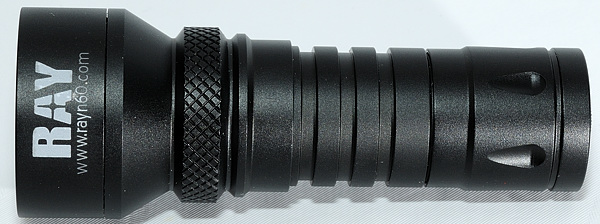
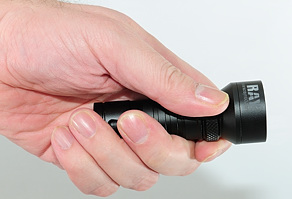
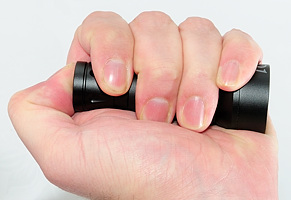
Ray is a new name in flashlights and the D1 is their first model. The light is a multimode CR123/16340 light with a rather large reflector. The light is controlled with a forward tail switch with on/off function, selecting the desired mode is done with multiple presses, but more about that later. The light is made of aluminum with hard-anodized (Type 3) finish.

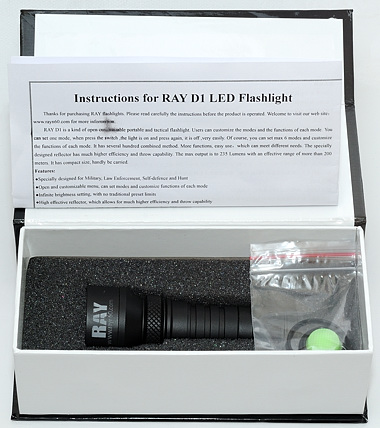
The light arrives in a cardboard box with foam insert.
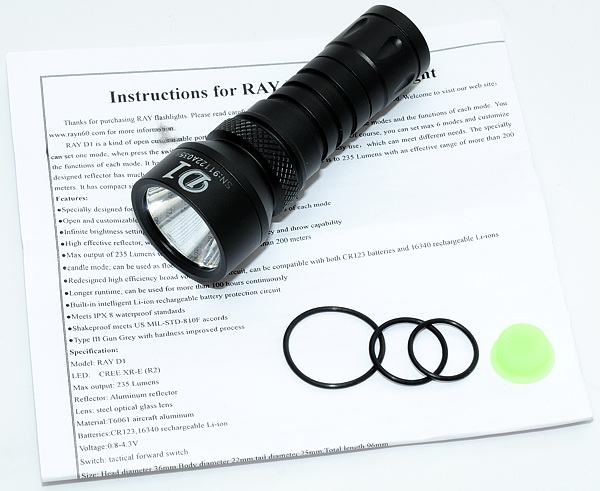
The contents of the box is the flashlight, GITD (Glow in the Dark) rubber boot for the tailcap (The mounted rubber is black), 3 extra O-rings and a specification and instruction sheet.

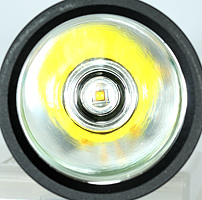
Looking from the front the large, deep (For this size light) and smooth reflector can be seen with a XR-E led in it.

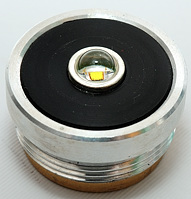

The head of the light can be removed to gain access to the led that is mounted in a pill together with the driver.
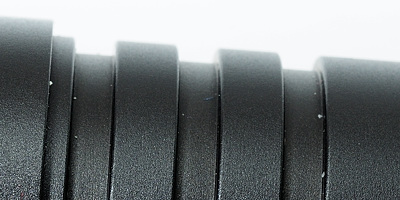
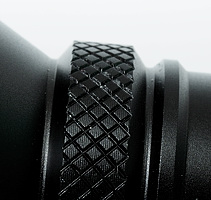
The body has some groves and a band of knurling. The knurling is placed exactly where I hold my fingers when using the light in underhand grip, when using overhand grip the groves helps holding the light.
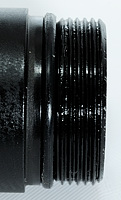
The backend of battery tube has an o-ring, like all joints on the light, and is anodized to provide a lockout function.
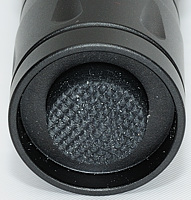
The tailcap has a forward switch and a ring around it, the ring does not hamper pressing the switch (Because the light is short), but is not high enough to allow tail standing. There is no hole for a lanyard in the ring.
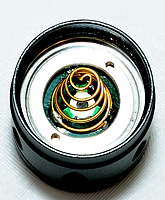
The tailcap is the usual construction, with easy access to change the rubber boot.

The light is not glued together, everything can be disassembled
Now to the UI (User interface) and modes, the light has from one to 6 slots and each slot can be programmed with any of the following:
- Brightness setting, any brightness from lowest to highest
- Strobe, there is a selection of frequencies from 1 Hz to 15 Hz
- SOS, with two different brightness settings
- Locator, will give a low power flash every 5 seconds (Called Standby in manual)
- Beacon, will give 3 fast flashes every 3 seconds (Called Liaison Signal in manual).
- Strobe with variable frequency
To program these settings, press the switch halfway 3 times and hold it down the last time, the light will flash fast two times and then slowly flash up to 6 times, release the switch when it has flashed the number of slots/modes that is desired.
Press the switch halfway again, the light will flash twice and then start cycling through all its settings, release the switch when the desired setting for the slot is reached. This is repeated for each slot. I.e. if 3 slots/modes is selected, the 3 next times the light is turned on a slot must be programmed.
The light has memory that will remember the last selected slot.
The light has very good throw for a small light, the big reflector is of course the reason for that. It is also nice to have a broad selection of modes and the possibility to adapt the light for any kind of use. But the light also has a few problems, the LiIon warning signal triggers when using CR123 batteries and if the programming sequence is accidental started, all slots/modes has to be reprogrammed.
Technical specification and measurements

The light supports both CR123 and RCR123/16340 LiIon batteries. The light has a warning when LiIon batteries are running low, but this warning is also trigged when running on fresh CR123 batteries.
The light is specified with 235 lumens for maximum output with a 16340 and a runtime of 30 minutes. With a CR123 the output is specified as 200 lumens with a runtime of 45 minutes. Minimum output is specified as 2 lumens for more than 100 hours. In my measurements the minimum is more like 5 lumens and (without measuring it) I would expect the runtime on minimum to be around 15 hours with CR123.
Current measurement with 16340: Min: 72 mA, Max: 1100 mA
Current measurement with CR123: Min: 100 mA, Max: 2000 mA
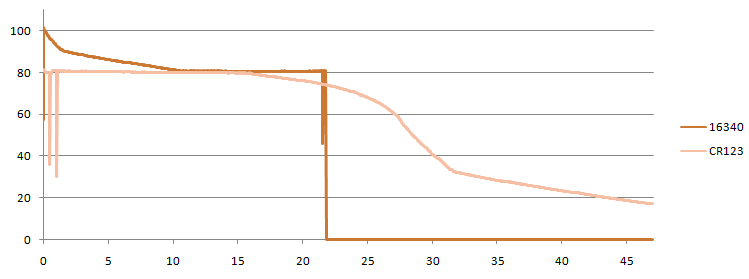
Here is the runtime with AW16340 and CR123, both at full brightness. On the 16340 it is possible to see the warning flicker, just before the protection in the AW cell shuts the light down. The CR123 starts with the warning flicker and then runs normally until the battery is empty. It has a long runtime at reduced brightness, but I have not measured it. The scale is in minutes.
Size: Diameter: 22mm to 26mm, length: 97 mm
Weight: 102.4 with AW 16340, 100 with CR123
Led is a Cree XR-E R2.


The light is using pwm to regulate the brightness, at 250 kHz this is the fastest pwm I have seen to date. The upper trace is high power and the lower trace is a medium power.

Slow strobe, at 0.6 Hz with 50% duty cycle.

Fast strobe, at 17 Hz with 50% duty cycle.

This trace is the low sos setting, the dot is 0.3 second and the total sos message is 7.6 second followed by 2.8 second before repeating.

Beacon/Liaison signal, 3 flashes each 0.1 second with a 0.1 second pause, then a 3 second pause.

Here is the full selection sequence, it takes about 1 minute and 30 seconds.
Comparison to other Flashlights
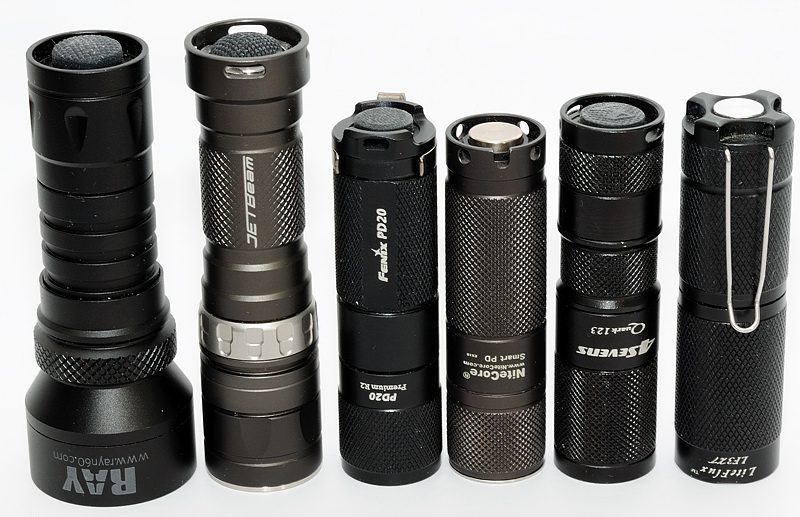
I have selected the following lights for comparison (Same sequence as picture): Ray D1, JetBeam RRT-0, Fenix PD20 R2, NiteCore EX10, Quark 123, LiteFlux LF3XT
These light are all lights than has many brightness settings and most of them can also use LiIon batteries.
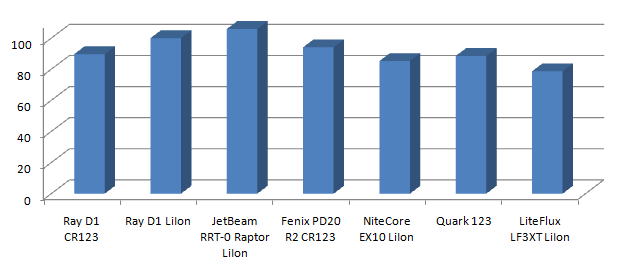
Measuring light output with a ceiling bounce, the D1 has about the same output as many other CR132/16340 lights.
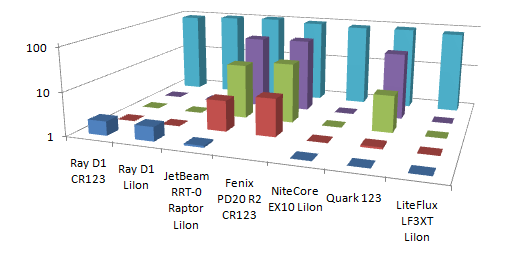
The brightness of D1 can be adjusted to any value between minimum and maximum, giving it even more possibilities than the lights with fixed levels, only the low level is not as low as the other lights.

Usual the RRT-0 wins in throw for small lights, but the bigger reflector on D1 makes it throw much better than RRT-0.
Beam profile
Ray D1 LiIon, JetBeam RRT-0, Fenix PD20 R2
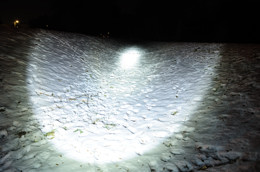
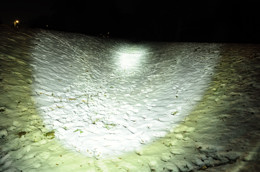

NiteCore EX10, Quark 123, LiteFlux LF3XT
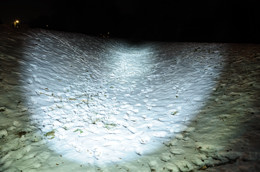
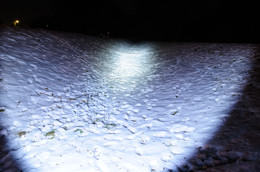

Beam profile, reduced exposure
Ray D1 LiIon, JetBeam RRT-0, Fenix PD20 R2


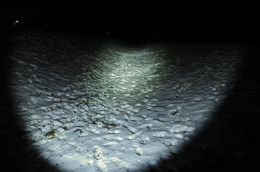
NiteCore EX10, Quark 123, LiteFlux LF3XT
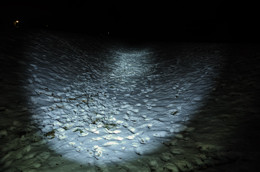
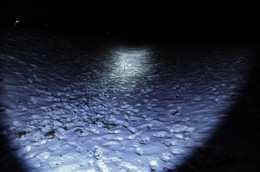
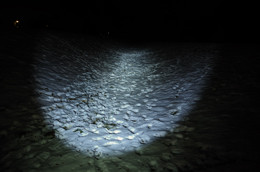
Lowest output
Ray D1 LiIon, JetBeam RRT-0, Fenix PD20 R2
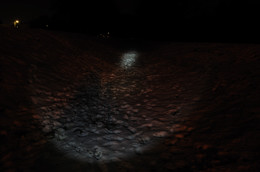

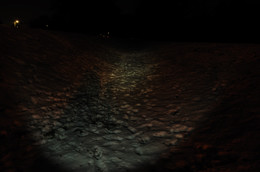
NiteCore EX10, Quark 123, LiteFlux LF3XT

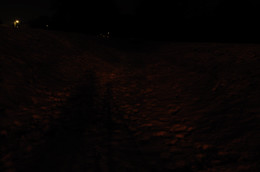

Dark reference:
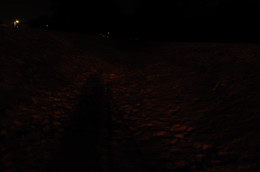
Hotspot
Note how bright the hotspot on the tree is, the D1 is much more concentrated and brighter than the other lights.
Ray D1 LiIon, JetBeam RRT-0, Quark 123
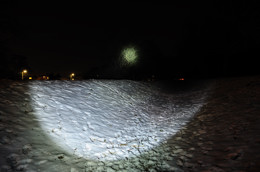
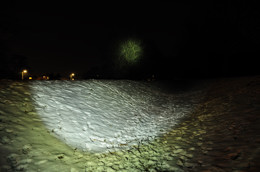
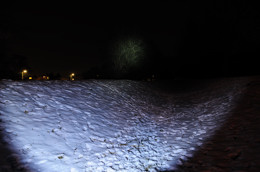
Ray D1
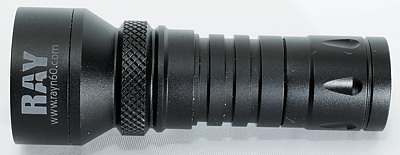
CR123 minimum and maximum:
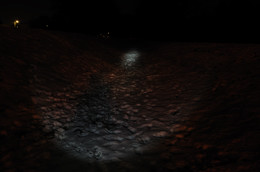
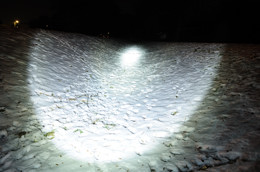
LiIon minimum and maximum:


Hotspot with LiIon:

CR123 minimum:
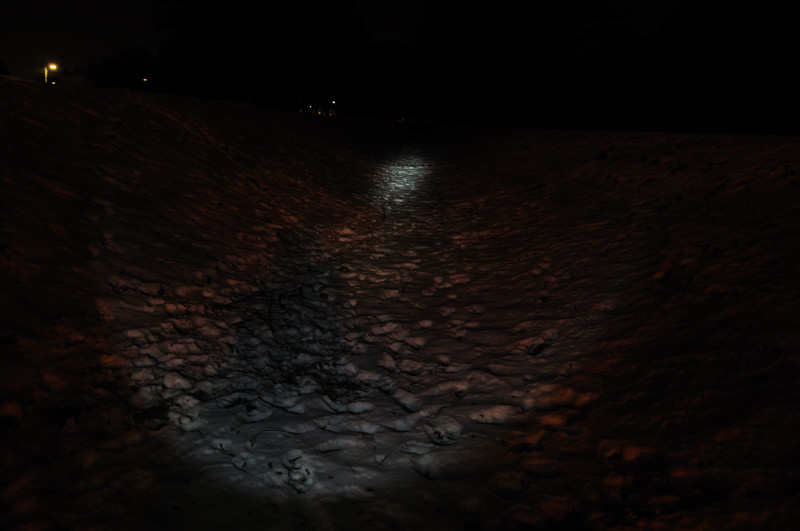
CR123 maximum:

LiIon minimum:
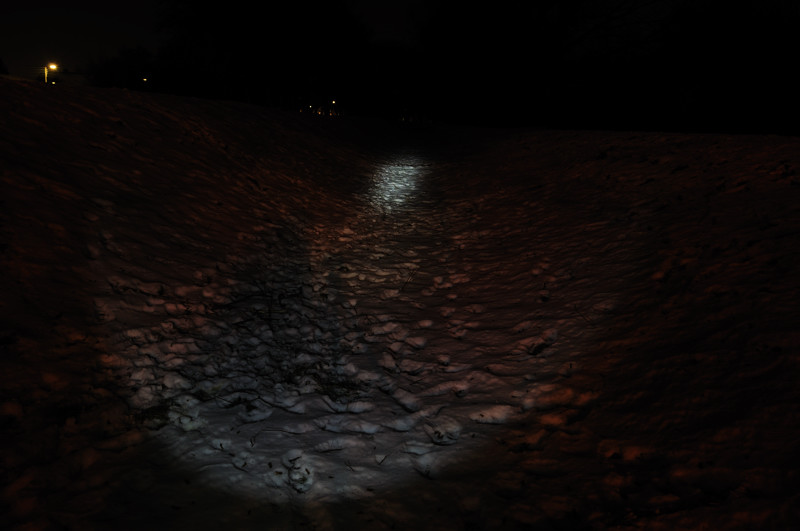
LiIon maximum:
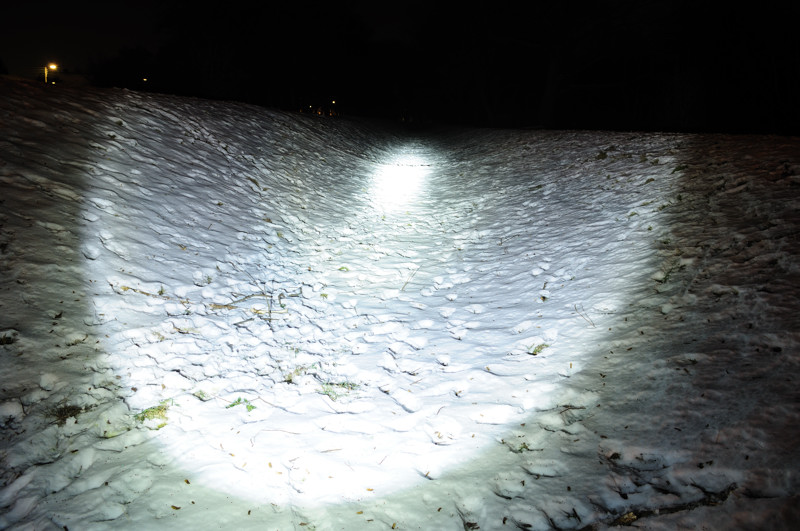
Hotspot with LiIon:
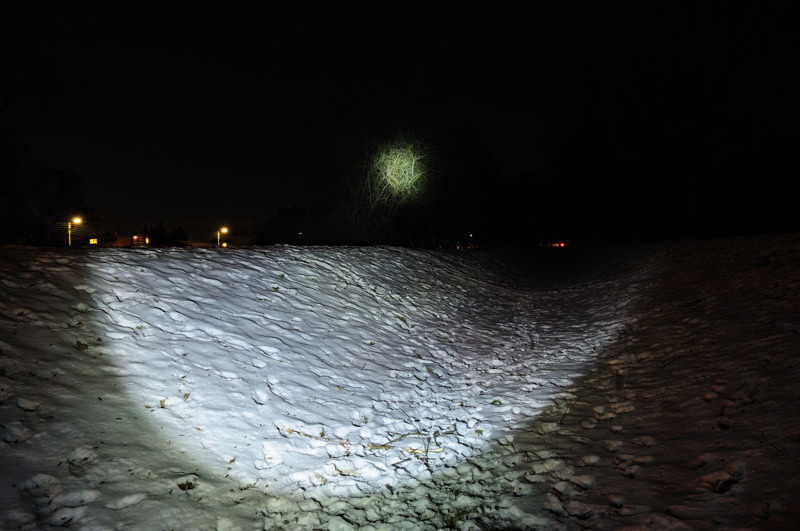
JetBeam RRT-0

This light has a ring to select between 5 predefined brightness settings.
Read more about the light and see pictures and beamshots in my Danish review
Low, #2, #3:

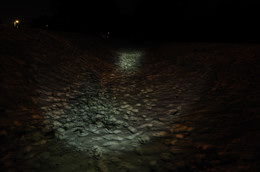
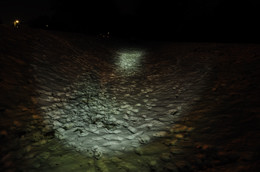
#4, high:


Hotspot:

Low:
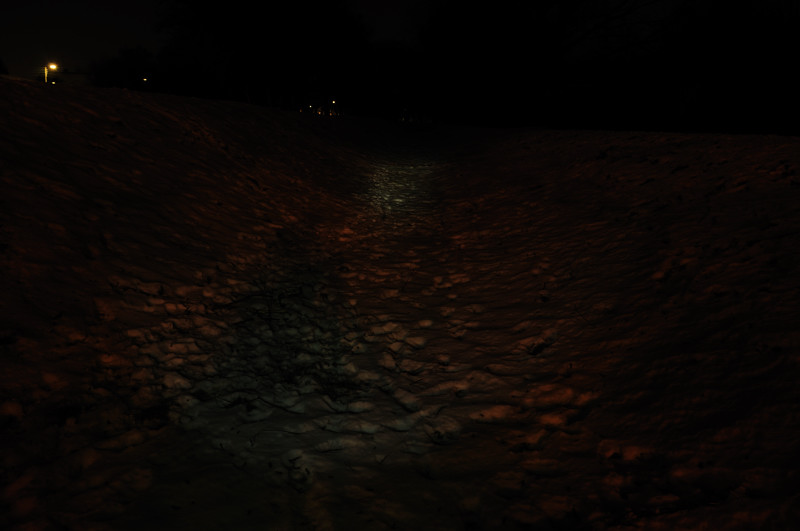
#2:

#3:
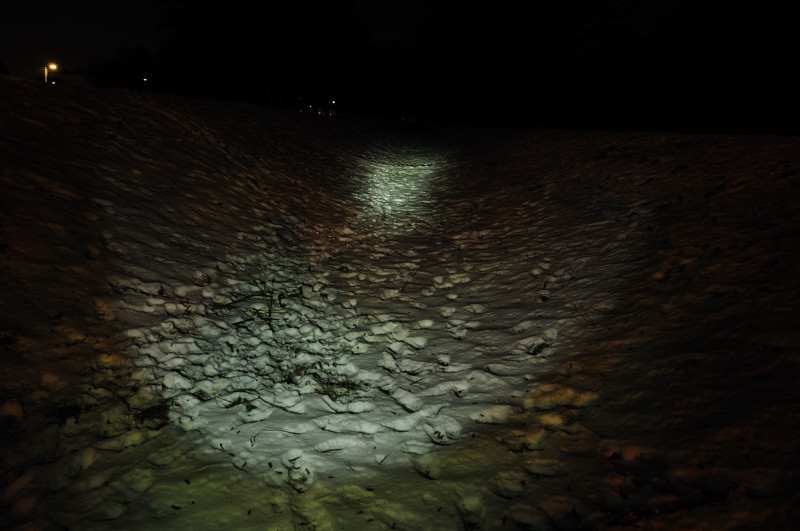
#4:
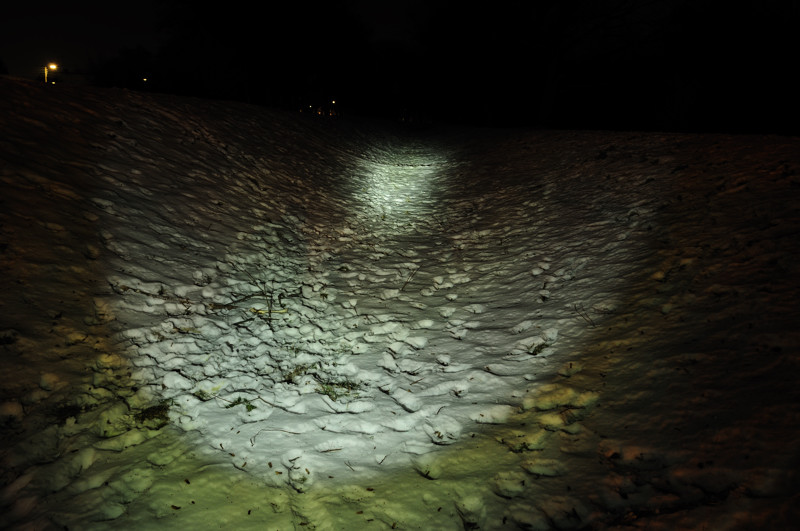
High:
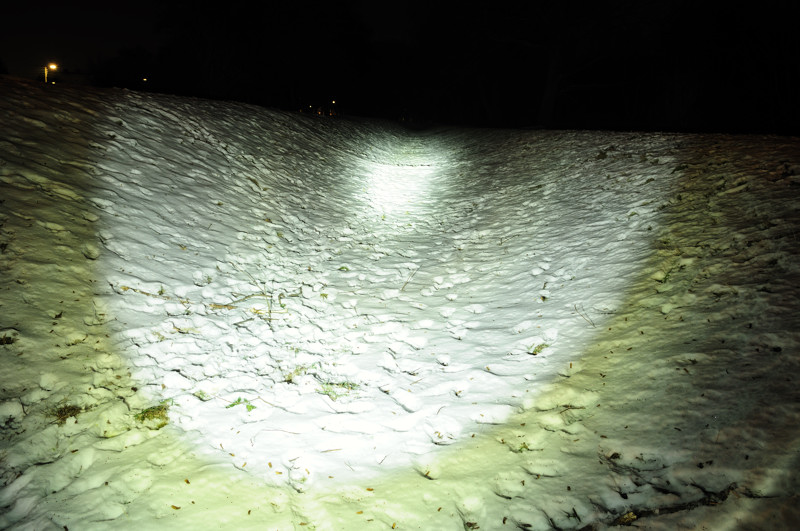
Hotspot:
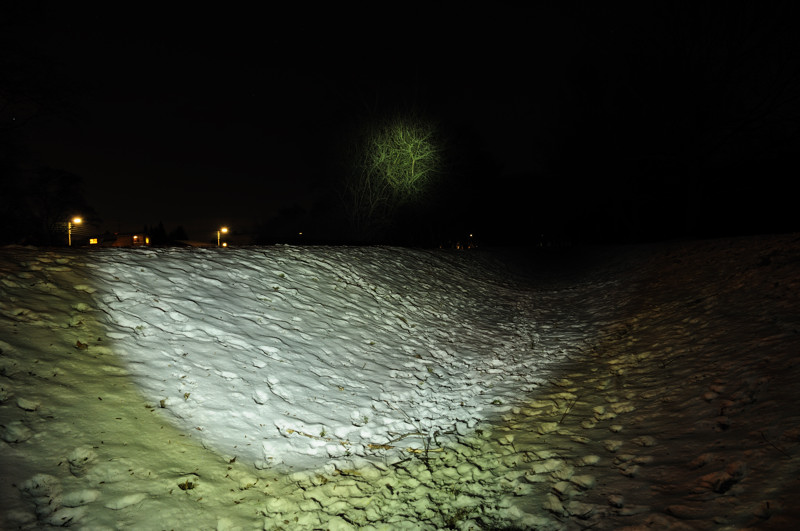
Fenix PD20 R2

Each press on the button will change the selected brightness, loose/tight head select between two different sequences.
Read more about the light and see pictures and beamshots in my Danish review
Low, medium, high:


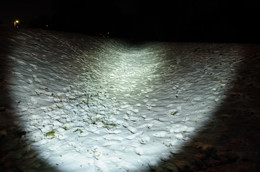
Turbo:

Low:
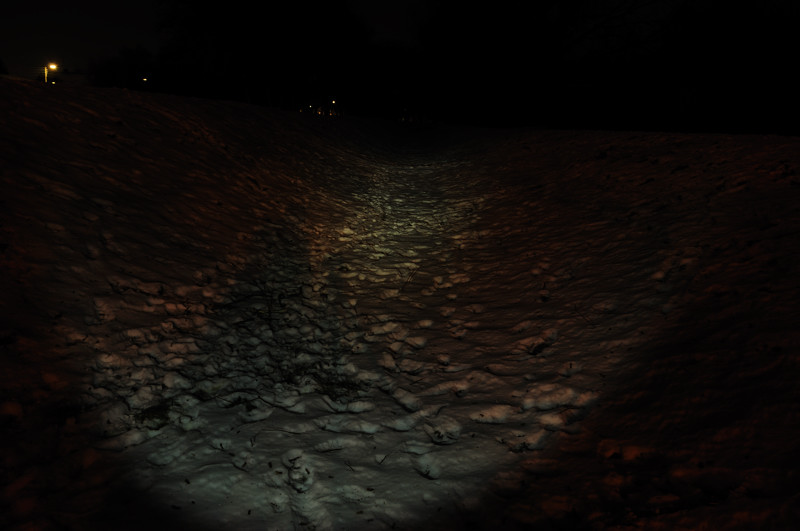
Medium:
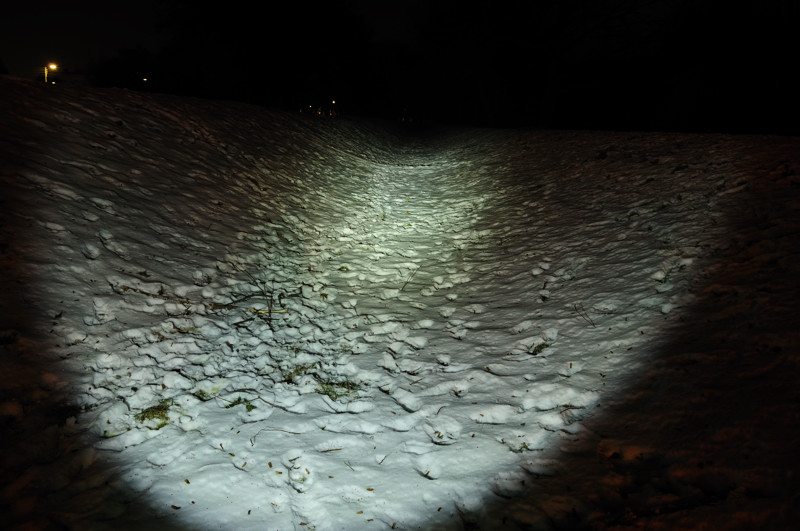
High:
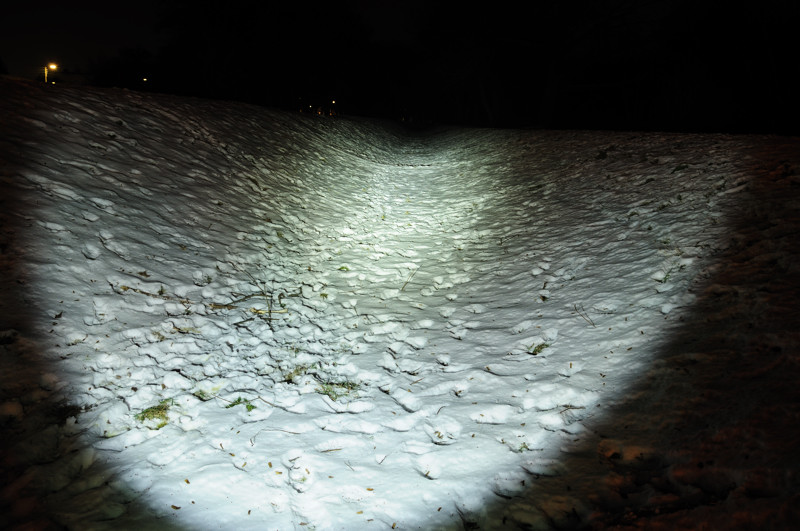
Turbo:
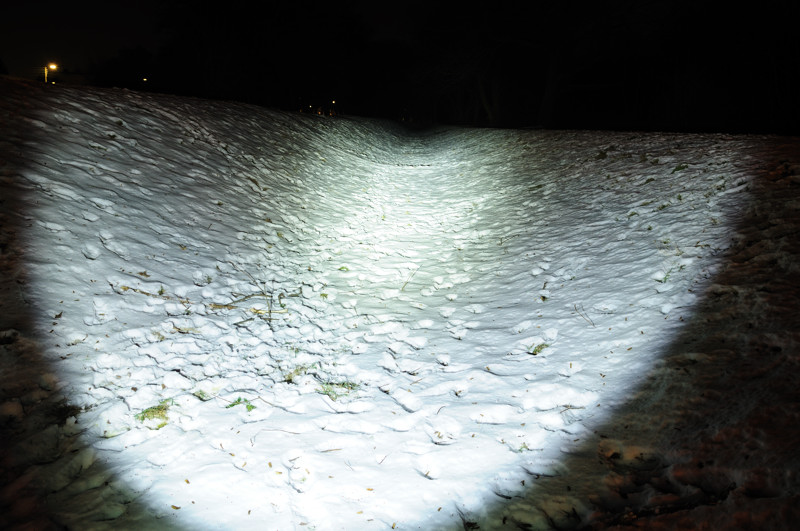
NiteCore EX10

Holding the switch down will adjust the brightness.
Minimum, maximum:


Minium:
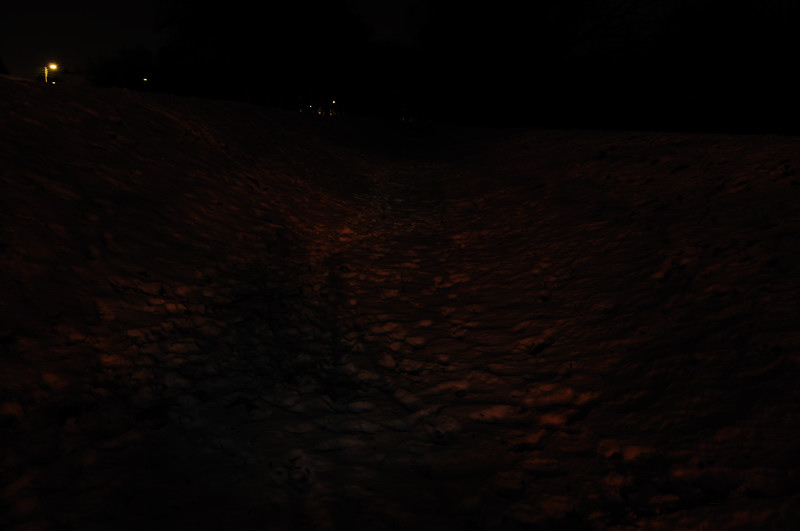
Maximum:
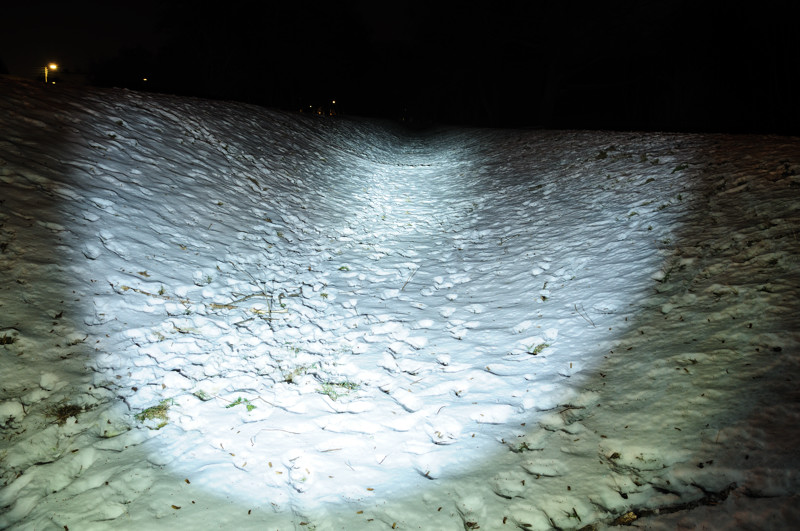
Quark 123

Each press on the button will change the selected brightness, loose/tight head select between two different sequences.
Read more about the light and see pictures and beamshots in my Danish review
Moonlight, low, medium:

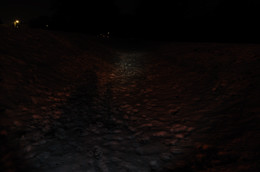
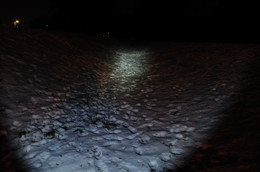
High, turbo:


Hotspot:

Moonlight:
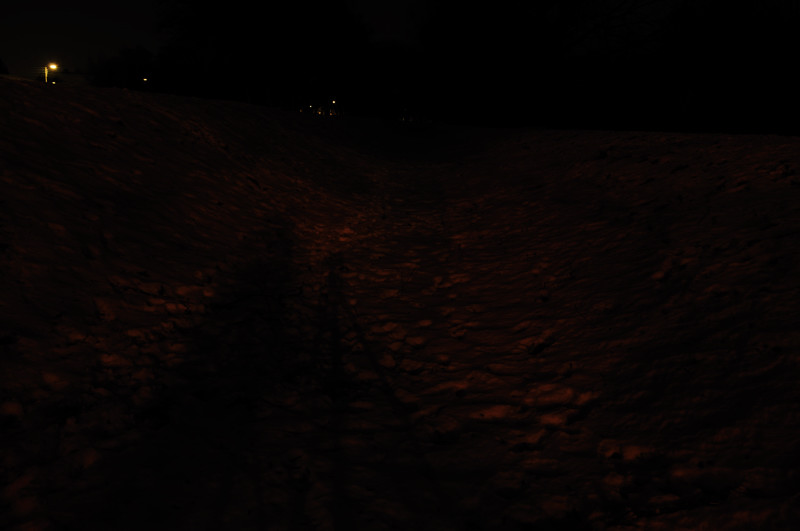
Low:
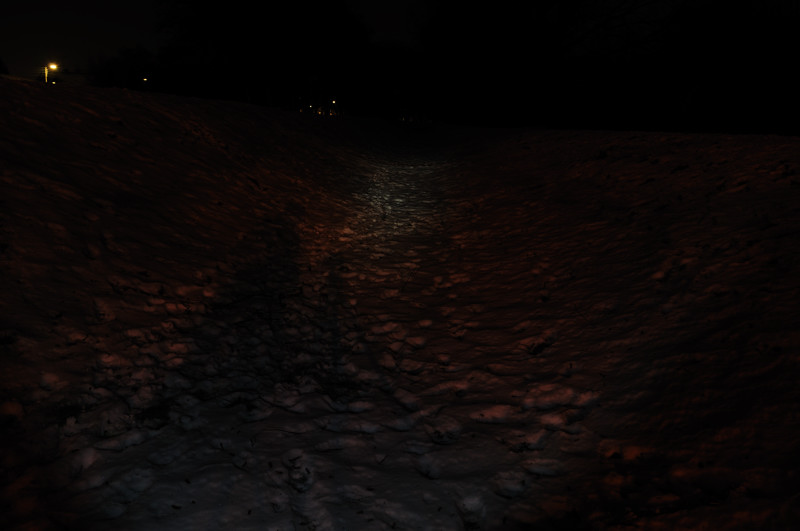
Medium:
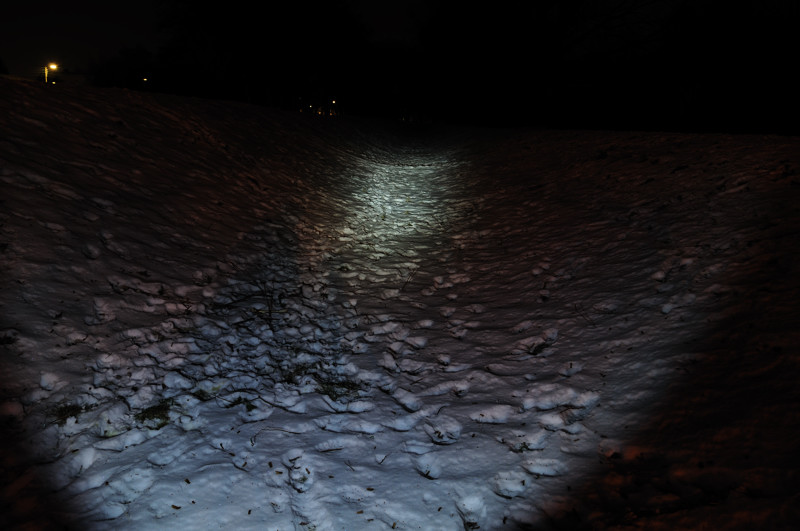
High:
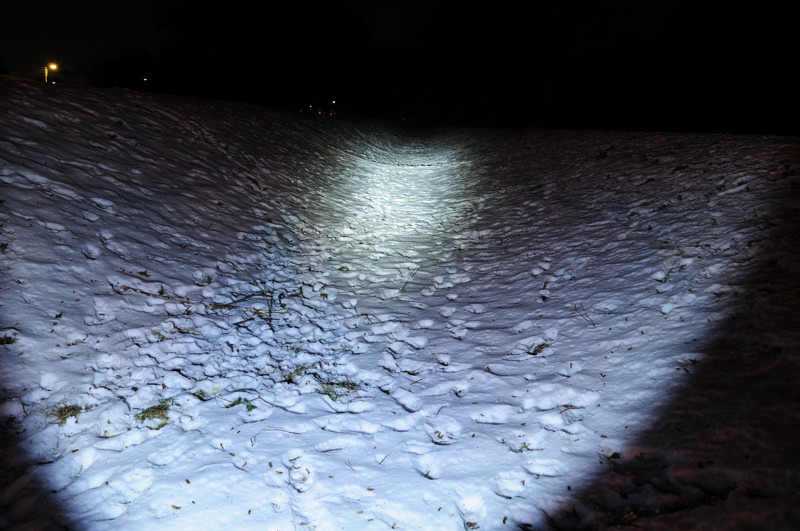
Turbo:
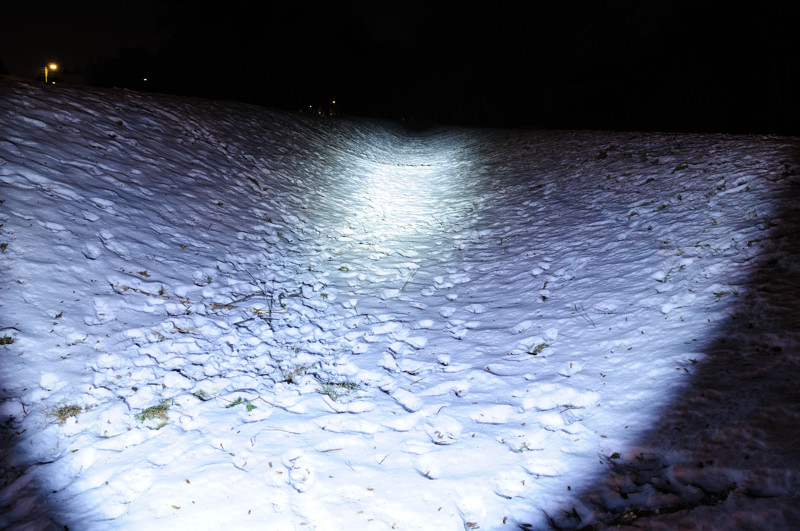
Hotspot:
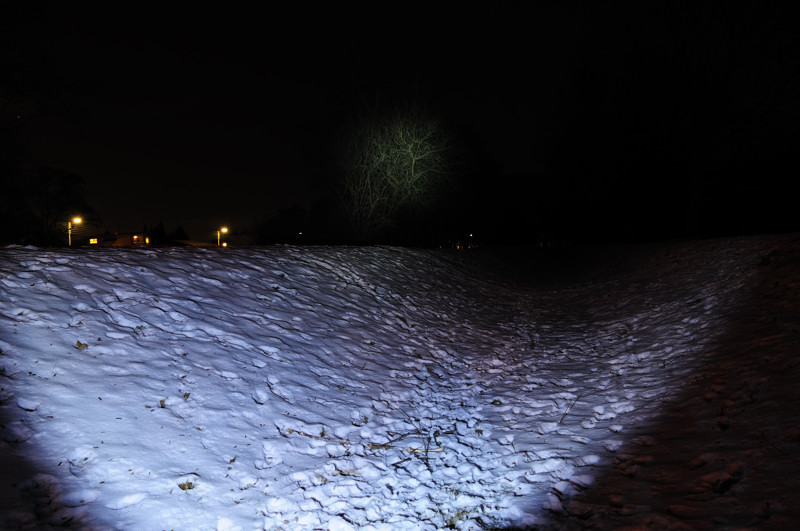
LiteFlux LF3XT

In default mode holding the switch down will adjust the brightness, but this light has lot of programable options.
Minimum, maximum:


Minimum:
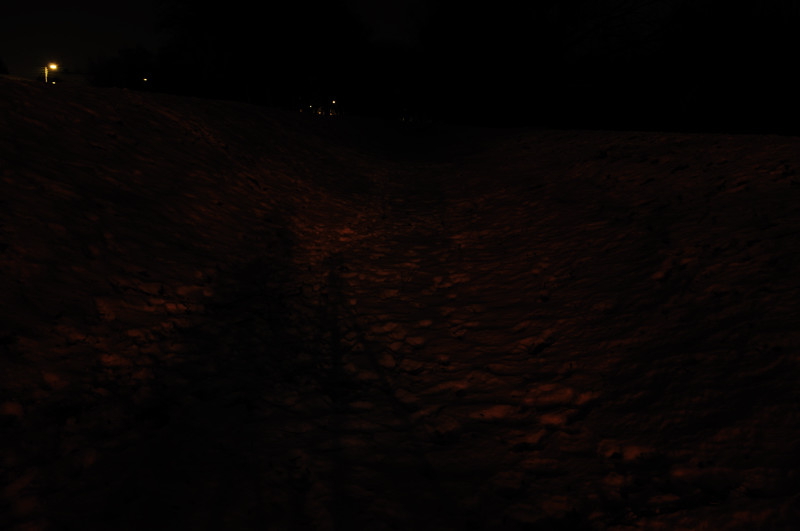
Maximum:

Notes
Light was supplied by Ray for review.
Sorry about the pictures, but I had a light behind me that showed up on the snow.











































































































